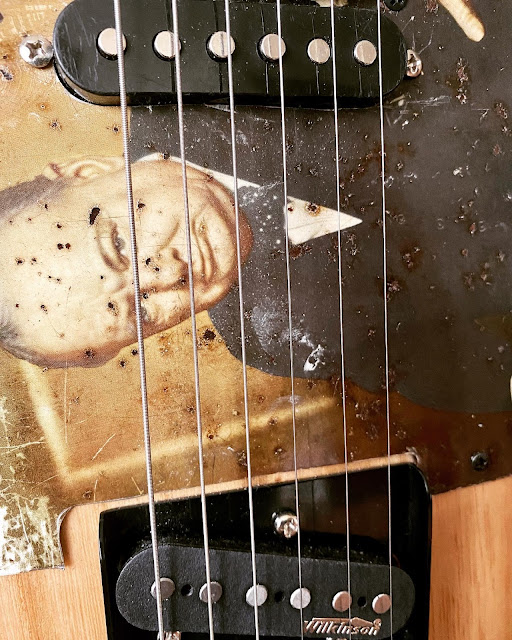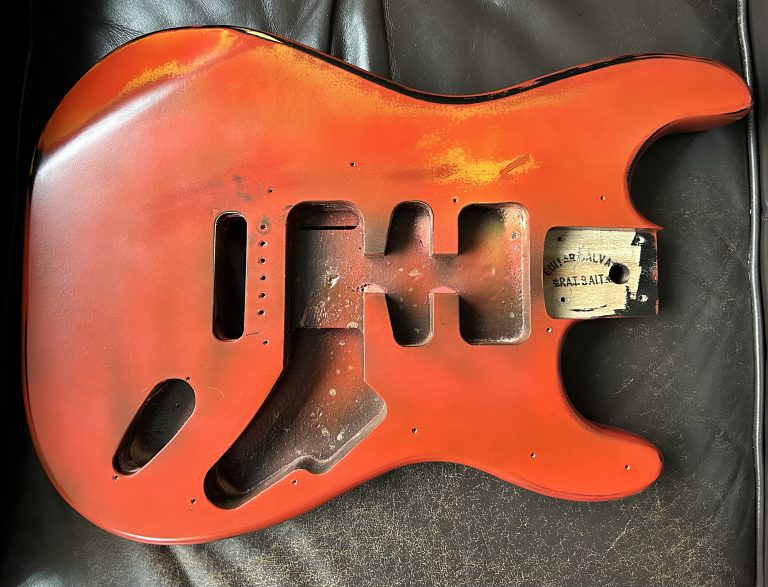One-Off Barnwood Guitar – Salvaged, Rewired, Reborn
This is no factory clone. It’s a one-off resurrection: a Telecaster silhouette with guts, built from salvaged roofing timber, an Ikea bookcase panel, and even a strip of painted skirting board. A true Rat Bait Guitars creation—raw, unrepeatable, and full of soul.
Specs & Features
- Body: Tele-style, hand-built from reclaimed barnwood and salvaged materials
- Neck: 22-fret maple, old-school profile, lightly nitro-finished for a broken-in vintage feel
- Electronics: Tele bridge pickup (Fender Squier) + neck humbucker, 3-way switch, tortoise shell scratchplate
- Hardware: Brand new 10mm machine heads, strap buttons
- Dimensions:
- Scale length: 25.5″
- Nut width: 42mm (1.656″)
- Body thickness: approx. 44mm (±0.5mm)
Build Notes
- Hand-assembled from recycled timber and new old stock parts
- Mid-range pickups that punch above their weight—expect vintage twang with grit, not sterile polish
- Natural barnwood finish: imperfect, honest, and full of character
- Traces of old paintwork and light nitrocellulose highlights for added texture
- Built for players who value soul over symmetry
Who’s Played Telecasters with Humbuckers?
The neck humbucker Tele isn’t just a mod—it’s a movement. Since the 1970s, this configuration has attracted players who crave warmth without sacrificing bite. Here are a few legends who’ve made it sing:
- Keith Richards: Famously wielded a Telecaster Custom with a neck humbucker, using it to drive the Rolling Stones’ swaggering rhythm tone.
- Jim Root (Slipknot): His signature Fender Telecaster features dual humbuckers, built for heavy riffing and brutal clarity.
- John 5: Known for his eclectic style, John 5’s signature Telecasters often include humbuckers to handle everything from country twang to metal shred.
- Andy Summers (The Police): While best known for his modified Telecaster with effects built in, Summers also explored humbucker configurations for added tonal depth.
This setup bridges the gap between classic Tele twang and the fuller, rounder tones of a humbucker—ideal for players who want expressive dynamics without switching guitars.
Follow us on Instagram

.JPEG)
.JPEG)
 Handbuilt in North Devon | Tele-Strat Hybrid | Raw Tone & Rebellion
Handbuilt in North Devon | Tele-Strat Hybrid | Raw Tone & Rebellion.JPEG)

.JPEG)




